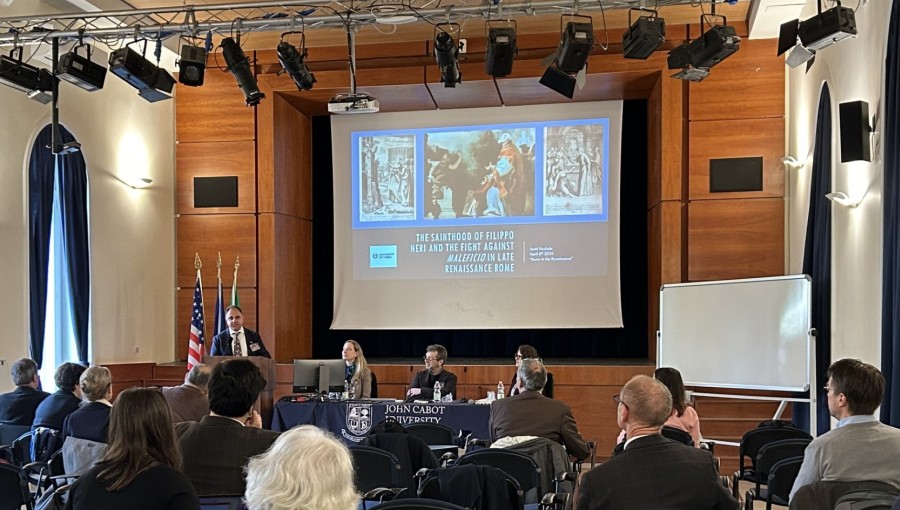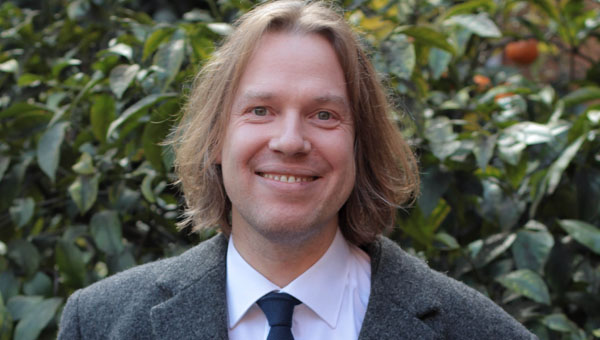Vittorio Emanuele Orlando, "President of Victory"
On Wednesday 16th June the Guarini Institute hosted a guest lecture featuring Prof. Spencer M. Di Scala, a pre-eminent professor of University of Massachussets, Boston, and scholar specialized in Italian history. His latest book, published in April 2010, “Vittorio Orlando: Italy” seeks to deepen the knowledge of Vittorio Emanuele Orlando, Italy’s Prime Minister during World War I. Historiography concerning this character has operated in a “default mode” and Vittorio Emanuele Orlando’s figure is a mixture of myth and history.

Professor Spencer M. Di Scala
Italy signed the Triple Alliance in 1882 with Austria and Germany. Italy became more industrialized and liberal over the years, and the Left did not see favorably Austria and Germany. Therefore the Triple Alliance became obsolete by the start of World War I and Italy declared its neutrality in 1914. Critically, this move was correct, says Prof. Di Scala, since the Austrians neglected to honor the Triple Alliance when they gave the ultimatum to Serbia without informing Italy about it (as the agreement contemplated).
History unfolds through images of notable characters. Vittorio Emanuele Orlando was born in 1860 a few days after the landing of the Thousand led by Garibaldi in Sicily. In the pre-war period he was minister of Education and of Justice. He stood in favor of wider civil rights and liberty to universities and he laid the bases for the reconciliation between the Church and the State, by opening the dialogue with Pope Pius X. When Giolitti resigned before the beginning of World War I, Antonio Salandra became Prime Minister and declared Italy’s neutrality at first. In 1915 Sidney Sonnino, minister of Foreign Affairs, secretly signed the Treaty of London, thereby Italy entered World War I. Italy’s remarkable characters that determined the course of World War I are General Luigi Cadorna (1915-1917), notable for being tough with his soldiers, and his successor Armando Diaz (1917-1918), who replaced Cadorna after the terrible defeat inflicted on the Italian army at Caporetto. Diaz, also called “Duca della vittoria”, saved the army from the collapse, and led Italy to victory.
At the Paris Peace Conference held in 1919 David Lloyd George and Georges Clemenceau represented respectively the United Kingdom and France. France, in particular, expressed its resentment towards Italy, since they thought that Italy attacked Austria only when it was collapsing, but, in fact, France behaved similarly with Germany. Woodrow Wilson, the US president, emanated the famous Fourteen Points, condensing major political guidelines concerning democracy, free trade, and the settlement of territorial disputes.
Vittorio Emanuele Orlando, Italian representative, interestingly demanded Fiume, which was not included in the Treaty of London, but it was inhabited by Italians, along with Istria. The missed fulfillment of territorial desires of Italy later contributed to the rise of extremist movements, especially of Fascism. In the complex chessboard of colonialism, the British and the French carved out the Middle East, by establishing mandates in Iraq, Palestine, Syria, and Lebanon, while Austria focused its interests on the Balkans.The defeated powers had had ambitions that were much greater than Italy’s.
One of the last pictures is a “wanted” photograph portraying a young Mussolini (1903). He was a radical socialist before founding the Fascist movement, and after the war was animated by an impetus of territorial conquest soon after the war his Fascist movement took off thanks also to the way Italy was treated at the Paris Peace Conference. Vittorio Emanuele Orlando, in fact, said: “If I don’t take back something to Italy, a big change will shake it.” At the Paris Peace Conference he predicted what was looming over Italy: Fascism, a major crisis that would affect the world.





